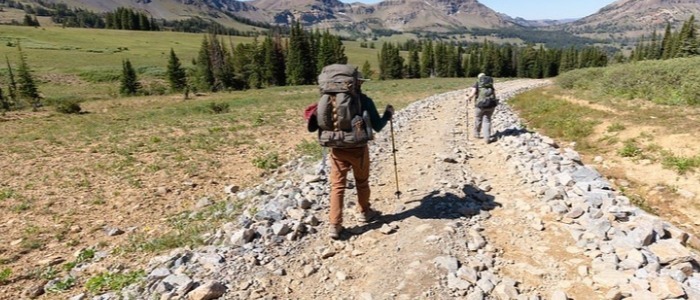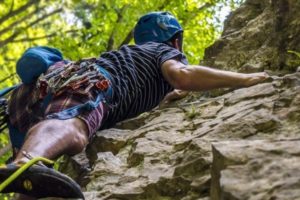The design of the human body is very impressive. It allows us to run around, walk long distances and even climb mountains using our legs, feet and toes. While most people would argue that your legs are the most important for hiking, it’s actually your toes as they provide balance and grip. While your toes are small, they are easily damaged because of where they’re located at the end of your foot.
If you have ever stubbed your toe, you know the pain that these small objects can cause. Consequently, it’s a good idea to keep them as safe as possible, especially when hiking. Downhill hiking is one of the worst things for your toes. Not only do you run the risk of losing your footing and falling over, but because your toes are being forced to the front of your boot, chaffing is a real problem.
Below are ten simple ways to protect your toes when hiking in the countryside this year.
Footwear
The number one reason that hikers get injured is that they are not wearing the right gear. Over the years, I have seen hikers with badly broken legs and no emergency equipment, twisted ankles because they’re wearing trainers, and broken toes because they don’t have the right walking boots.
You need to make sure you’re wearing a pair of boots that actually fits your feet. The boots shouldn’t be too loose or tight but comfortable enough to provide some space between the end of your toes and the front of your boots (about half an inch is ideal).
You also need to make sure they are sturdy enough so that if you slip and jam your foot into a rock, the boot will protect your feet. To be clear, a sturdy boot also includes the sole. Thin soles will not protect your toes against rocks or roots.
Concentration
If hikers have an accident and injure themselves in the countryside, the first reason is they’re not wearing the right gear. The second reason is they loose concentration and misplace their foot positioning. Hiking downhill is nearly as taxing for your legs as walking up hill, especially if you’re carrying a backpack.
The extra work for your legs will tire them out more quickly than walking on the flat. Once you start getting tired, it becomes more and more difficult to support and balance your body weight. If you’re not concentrating, its very easy to misplace your foot positioning, loose your balance and at best case, damage your toes.
Lace Your Boots Properly
You need to make sure you take your time to lace up your boots properly, as this will help you keep your balance and walk more safely. If your feet can move around inside your boots, as soon as you head downhill, your weight will be transferred to your heels and your feet will shift forwards. If you boots are not laced correctly, you’ll smashed your toes into the end of your boots causing problems.

Hiking Poles
Hiking poles are the difference between falling over and not. Personally I cannot even think about going out walking without my hiking poles. Using a hiking pole will help deepen your stability by bracing you against any loss of balance that could happen due to uneven terrain or because you’re tired from walking uphill earlier. Two things;
- Firstly, choose poles with small rubber tips as they provide good grip and won’t slip as easily as metal ones would.
- Secondly, buy aluminium poles. Carbon fiber might be lighter, but if you land on them in a fall they break. Aluminium poles bend, allowing you to bend them back.
Socks
The socks you wear when hiking downhill should be specially made for hiking. There are two points you need to focus on when choosing socks. Both will help protect your feet;
- Firstly, choose socks made of a proper moisture-wicking and quick-drying material that will absorb any sweat inside your boots and help keep your feet dry at all times. They’ll also provide good insulation so you won’t feel the cold as easily.
- Secondly, make sure they are designed for hiking and thus come with extra padding in the right areas. The toes, the heels and potentially the soles of your feet are all good places.
Take Care of your Toenails
Avoid clipping them too short or leaving them too long as they can become very painful and start developing infections. Also, try not to rip off loose skin or hangnails with your teeth, as it can lead to bleeding and infection.
Balls of Your Feet
We’re all trained to stand with our weight on our heels, but that’s not actually what you should do when hiking – try to place it instead on your balls. Try this simple experiment:
- Push your body weight onto your toes with one foot
- Lift each heel one by one; you’ll notice they make small indentations in the ground (that’s because they don’t have much padding).
- Do exactly the opposite with your other foot; put all of its weight on its front part and see how it quickly becomes painful (and soon enough, you’ll start feeling like leaning back a little bit).
This shows that our bodies are adapted to walking on our toes.
Maintain a Zigzag Pattern when Walking
Walking down hill in a zig-zag pattern is very important when the decent is steep, or when you start getting tired. When hiking downhill, your momentum can make you sway more than you should. This is terrible for your joints and muscles in your legs as it will put too much pressure on them.
To avoid this, try to maintain a zigzag pattern as you walk down (just like when walking around on flat land). When going down curvy trails, walk on straight lines that are perpendicular to these curves; this way, you’ll distribute the weight evenly between all sides of the soles of your boots/ shoes.
Time to Rest
At the end of each day’s hiking, you need to make sure you give you feet some time for recovery. Its a great idea to take your feet out of your walking boots, apply moleskin pads to any areas where friction has caused irritation, and elevate your feet. This will help reduce inflammation and get the blood flowing through your feet to help with their recovery.
If you have blisters, it’s a good idea to put some antibiotic ointment on any blisters that may have formed and cover them with a band-aid.
Don’t Forget to Use Foot Powder
Keeping your feet dry, especially when its raining outside is one of the most important points to help protect your toes. Wet or damp feet cause irritations which in turn causes blisters.
To reduce any dampness, make sure you’re using foot powder that doesn’t contain talc. Talc is known for causing inflammation of the lungs if inhaled too often, so opt for a cornstarch-based product instead. It will absorb more sweat and help keep your feet dry during long hikes.
The Bottom Line
Staying safe while hiking downhill can mean the difference between a fun experience and a terrible day in the countryside. As a result the above ten simple steps will ensure your safety and increase your comfort level during this activity.
However, if, despite all efforts, you still feel any pain or discomfort, it’s best that you take a break from hiking for a few days until your feet are back in shape.







